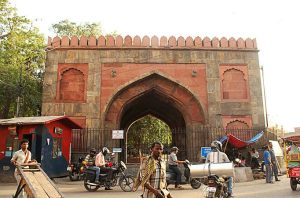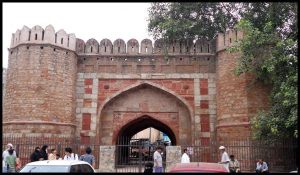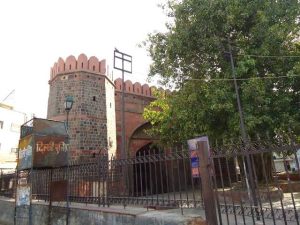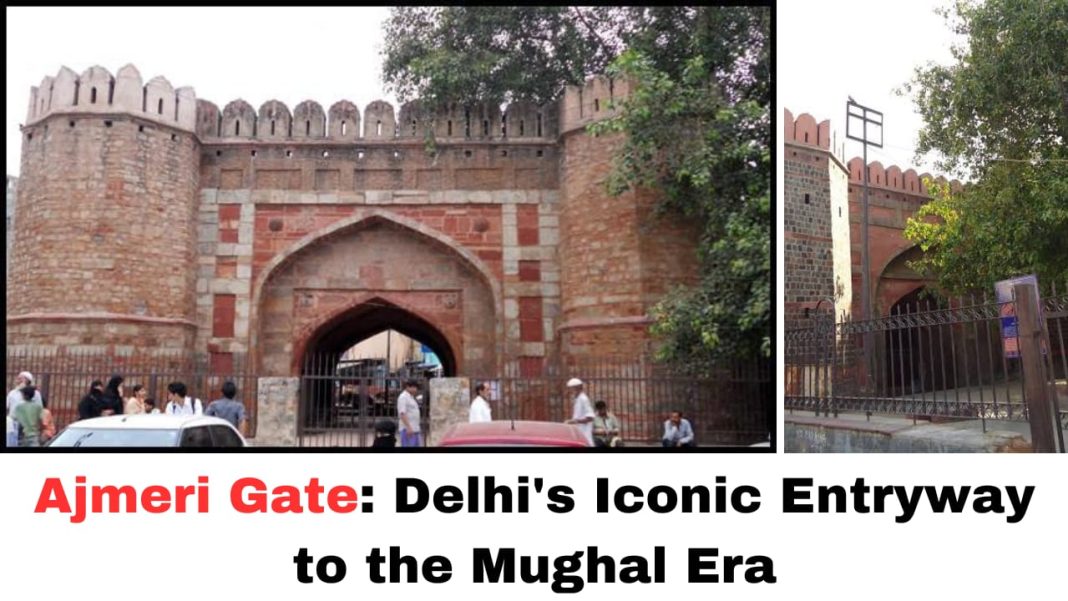Digital News Guru Delhi Desk:
Ajmeri Gate is one of the prominent historical landmarks located in the heart of Old Delhi, India. With its rich history and architectural significance, it stands as a testimony to the grandeur of Mughal-era Delhi. In this article, we explore the history, significance, and cultural importance of Ajmeri Gate, a key element of Delhi’s fascinating past.
Historical Background
Ajmeri Gate, one of the gates of the walled city of Shahjahanabad, was built in the 17th century during the reign of Mughal Emperor Shah Jahan. The gate is named after the city of Ajmer in Rajasthan, which was an important center of Sufi culture and pilgrimage, particularly to the shrine of Khwaja Moinuddin Chishti. Historically, this gate served as the main entry point for people traveling from Ajmer and other regions to Delhi, thereby linking the capital to the southern parts of India.

The gate forms part of the fortifications of the old city of Shahjahanabad, which was established by Shah Jahan when he shifted his capital from Agra to Delhi in 1648. The city was surrounded by a wall, and the gates provided access to different parts of the city. Ajmeri Gate, located on the southern side of the city, is one of the most important gates still standing today, alongside others like Lahore Gate, Delhi Gate, and Kashmiri Gate.
Architecture and Design
Ajmeri Gate is an impressive example of Mughal architecture, which combines elements of Persian, Turkish, and Indian architectural styles. The gate is made of red sandstone, a hallmark of Mughal-era construction, and features intricate carvings, arches, and calligraphy. The design is symmetrical, with a large central arch that was once the main passage for carts and travelers entering the city.
The gate’s structure has been adorned with floral motifs and Arabic inscriptions, many of which are Quranic verses or royal decrees issued by the Mughal emperor. The overall design reflects the grandeur and sophistication of the Mughal architectural style, which emphasized symmetry, precision, and aesthetic beauty.
In addition to its grand design, the gate is also functional. It was designed not only to welcome visitors but also to provide a defensive structure for the city, protecting its inhabitants from invaders. As a result, Ajmeri Gate was strategically placed to guard the city’s southern entrance and played an essential role in the defense mechanisms of Shahjahanabad.
The Gate’s Cultural Significance
Ajmeri Gate is not just a monument of historical importance; it also holds cultural significance in the context of Delhi’s social and religious life. The gate has been the entry point for thousands of pilgrims traveling to the city, particularly those on their way to the revered Sufi shrines, including the famous Dargah of Hazrat Nizamuddin Auliya, a Sufi saint located in the nearby Nizamuddin area.

Additionally, the area around Ajmeri Gate, particularly the nearby locality of the Ajmeri Gate area, has been historically important as a bustling commercial hub. In the early 20th century, it became home to many textile markets, and over time, it evolved into a focal point for business and trade. This commercial significance still continues today, with the region being home to many markets, including the famous Ajmeri Gate market, where one can find a wide array of goods ranging from textiles to traditional Indian artifacts.
The gate’s cultural legacy extends beyond commerce and spirituality. Ajmeri Gate has often been a center of political and social activity, especially during the British colonial period. The area saw many protests, gatherings, and social movements, marking it as an integral part of the city’s history of resistance and resilience.
Ajmeri Gate in Modern Times
Today, Ajmeri Gate stands as a fascinating juxtaposition of history and modernity. Located in the bustling area of Paharganj, it continues to be a prominent symbol of Old Delhi’s rich cultural and historical heritage. The surrounding areas, while having undergone significant urbanization, still maintain a strong connection to their historical roots.
The gate itself, though partially eroded and weathered by time, continues to attract both domestic and international visitors. Its proximity to the famous Jama Masjid, Red Fort, and Chandni Chowk makes it a critical stop for tourists exploring the old city of Delhi. Many travelers also visit Ajmeri Gate as part of their pilgrimage to Sufi shrines and historical sites in the region.
However, the structure has not been immune to the challenges of urbanization and neglect. With the increasing pressure of rapid modernization and the urban sprawl of Delhi, there have been concerns about the preservation and restoration of this iconic gate. Urbanization has affected the area around Ajmeri Gate, with heavy traffic, commercial activities, and encroachments threatening the historical significance of the monument. Despite these challenges, efforts are being made by the Delhi government and heritage conservation groups to preserve the gate and its surrounding areas.
Ajmeri Gate and Its Role in Delhi’s Identity
Ajmeri Gate holds a unique place in Delhi’s identity. As one of the few surviving gates from the Mughal period, it serves as a reminder of the city’s Mughal past, a time when Delhi was the epicenter of one of the most powerful empires in the world. The gate represents the resilience of Delhi’s historical architecture, surviving centuries of change, political upheaval, and modernization.

For the residents of Delhi, Ajmeri Gate is more than just a monument; it is an integral part of the city’s cultural and historical fabric. It is a symbol of continuity, linking the present to the past and providing a window into Delhi’s rich and diverse history.
Conclusion
Ajmeri Gate is not merely an architectural structure; it is a living piece of Delhi’s past that continues to shape the identity of the city today. Its historical significance, architectural beauty, and cultural importance make it a key landmark in the capital. As the city continues to evolve, Ajmeri Gate stands as a testament to Delhi’s enduring legacy, offering a glimpse into the city’s glorious past while remaining an essential part of its vibrant present.
You May Also Read: In the Shadow of History: The Untold Story of Malcha Mahal








